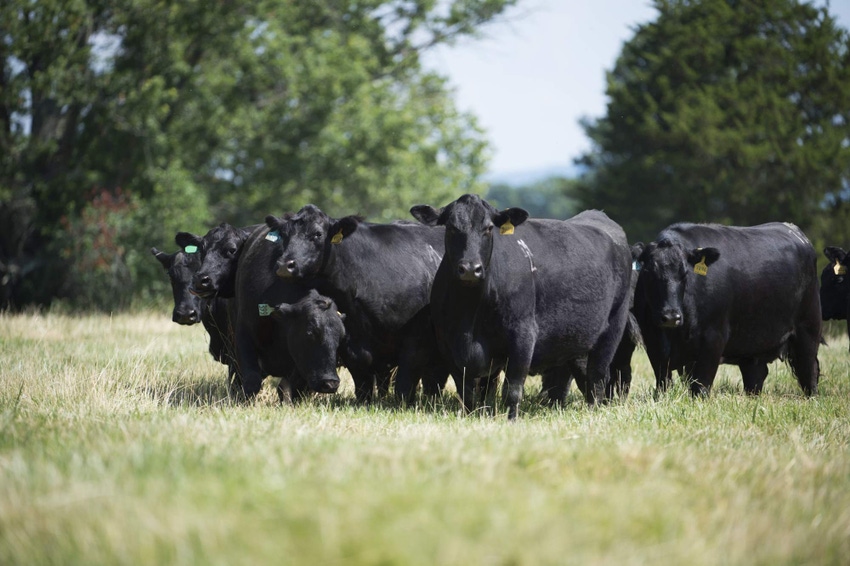You can still use medicated mineral to control anaplasmosis, but under the veterinary feed directive, you must have a valid relationship with a veterinarian.
July 9, 2017

If you’ve got anaplasmosis in your herd, you’ve got a problem. Death is a common outcome of cattle developing anaplasmosis. The cattle that don�’t die may experience a long recovery time after infection, pregnancy loss is common and bulls may experience infertility.
Anaplasmosis is a disease of cattle that tends to occur most commonly in mature cows and bulls during the summer and early fall. We’ve always thought of it as a disease that mostly affects cattle in the southern tier of states, which is mostly true, but with increased cattle movement over the last decade, the footprint of anaplasmosis has spread.
Anaplasmosis is caused by Anaplasma marginale, a microorganism that invades red blood cells and causes severe anemia. Transmitted through the blood, the disease is spread by biting flies or ticks or infected blood transferred on contaminated needles or other equipment.
Signs of anaplasmosis can include:
Orange-yellow coloration of the mucous membranes
Thin, watery blood
Cattle that are slow, reluctant to move or short of breath
Aggressive behavior shortly before death
Sudden, unexplained death of adult cattle
Abortions
Cattle that are infected with anaplasmosis may recover, but they remain chronically infected carriers and a source of infection to the rest of the herd. Cattle infected early in life may never show signs of disease, but they serve as a source of infection for herdmates. This chronic carrier state is what allows anaplasmosis to persist in cow herd in endemic regions and partially explains the unpredictable nature of the disease occurrence.
In fall-calving herds, heavy bred cows and recently calved cows seem to be at greatest risk of death or abortion. Anaplasmosis causes a rapid onset of profound anemia, and those cows experiencing the extra metabolic requirement of advanced pregnancy, or the stress of early lactation, are less capable of managing that anemia.
In spring-calving herds, cows are getting bred during the peak of vector season, so bull health and fertility are of particular concern. Cows nursing calves at this time are also at risk.
One of the most commonly used and predictable methods of controlling anaplasmosis is incorporating a feed-grade chlortetracycline in the animal’s feed or mineral supplements.
The veterinarian signing the veterinary feed directive (VFD) for these products needs to be aware of which formulation is being used. If it is a hand-fed formulation, they must choose the product with the appropriate grams-per-ton level of chlortetracycline to achieve the correct dosage based on anticipated intake and weight of the cattle.
1. Hand-fed formulations are approved at the level of 0.5 mg per pound of body weight, per day. These formulations can be in hand-fed minerals or other hand-fed feeds that are formulated to deliver 0.5 mg per pound of body weight, per day of chlortetracycline.
These formulations are available in a variety of concentrations depending on the weight of the cattle and the anticipated consumption per day. The label instructions will state how much needs to be hand fed each day to deliver the required level of 0.5 mg per pound of body weight, per day. Most of the currently available anaplasmosis control minerals are labeled for a hand-fed formulation. It is important to make sure the hand-fed formulation chosen will adequately deliver the amount of chlortetracycline required based on the size of cows.
For example, cows weighing 1,400 pounds will require 700 mg of chlortetracycline per head per day. If the feeding rate is 4 oz per head per day, that would require a mineral containing 5,600 grams per ton of chlortetracycline. The veterinarian writing the VFD will need to know the average weight of the cows to make the appropriate recommendation on the level of chlortetracycline in the mineral to effectively treat those cows.
2. Free-choice formulations are approved at the level of 0.5 to 2.0 mg per pound of body weight, per day of chlortetracycline. Not all chlortetracycline products have a free-choice label indication. Free-choice minerals containing chlortetracycline must use a formulation approved by the Food & Drug Administration, therefore a limited number of products are available as free-choice minerals.
Notice there is a wider approved dose range with free-choice minerals. This wider range of dosage helps to correct for the variability in mineral consumption seen during some seasons of the year, and it helps to address the variability in animal size, particularly in mature bulls that weigh substantially more than the average cow. Most important, the free-choice formulation has the convenience of free-choice delivery, meaning that mineral feeders do not have to be filled every day.
It is always important to consult your veterinarian regarding proper use of animal health products. Under the veterinary feed directive, a veterinarian must authorize the use of feed or mineral products containing medically important antibiotics. The veterinarian will make the medical decision if anaplasmosis control is warranted, and recommend the correct product to deliver the necessary dose to achieve the desired control of anaplasmosis.
Scruggs is managing veterinarian, Zoetis Beef Technical Services
You May Also Like



